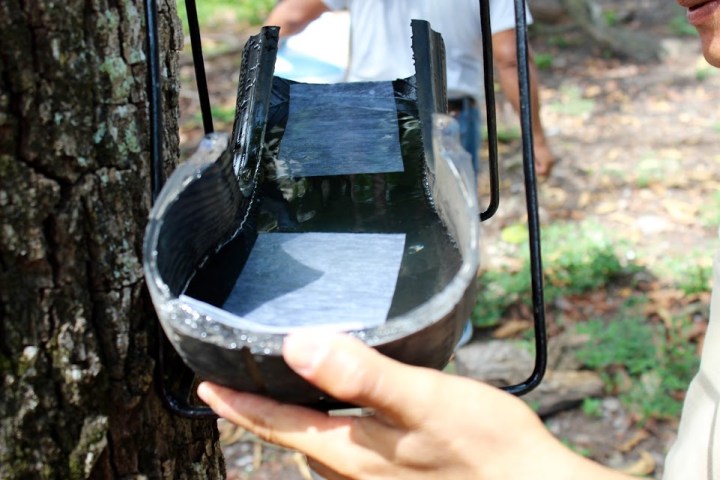
This accessible, comparatively low-tech approach to stopping Zika relies on a specifically-designed trap called an ovillanta. The ovillanta is made of two almost 20-inch sections of recycled tires that are formed into the shape of a mouth and set with a fluid release valve on the bottom. The trap is filled with a milk-based solution that is non-toxic, but highly attractive to mosquitoes. Female Aedes aegypti mosquitos (which are known to carry Zika, dengue, chikungunya, and yellow fever) lay their eggs on a thin sheet of wood or paper floating in the solution, and researchers collect the sheet in order to analyze results.

The key to the trap is really the milky solution’s secret ingredient: mosquito pheromones. The pheromones draw female mosquitoes into the trap by indicating that the area is a safe breeding location. Once the researchers have collected and analyzed the Aedes eggs, they destroy them with either fire or ethanol. And after each collection, the pheromone solution is drained from the trap and filtered before being reinserted into the tire trap.
In a testing round of 84 ovillanta traps, the research team captured and destroyed more than 18,000 Aedes eggs per month over the course of a 10-month study. With seven times more eggs collected than in the 84 regular traps in the area, it seems that the study was a wild success. What’s more, there were no new reports of Zika cases in the town of Sayaxche, the remote urban area of Guatemala where the study was conducted. Normally, the region would have been expected to report 24-36 new cases within that 10-month period.
Compared to the high-cost, high-tech anti-Zika solutions being cooked up by some of the world’s best-equipped genetic labs, the ovillanta is a very simple tool. But despite its simple construction, it looks like the trap is effective in slowing the spread of Zika in vulnerable regions. The use of recycled tires was strategic and quite practical: up to 29 percent of Aedes aegypti breeding sites are found in water-storing tires. Researchers hope to see ovillanta traps in every home in vulnerable parts of the world, and plan to provide a mosquito control training program to help bolster a homegrown effort among local health workers and community members to stop the spread of the virus.


